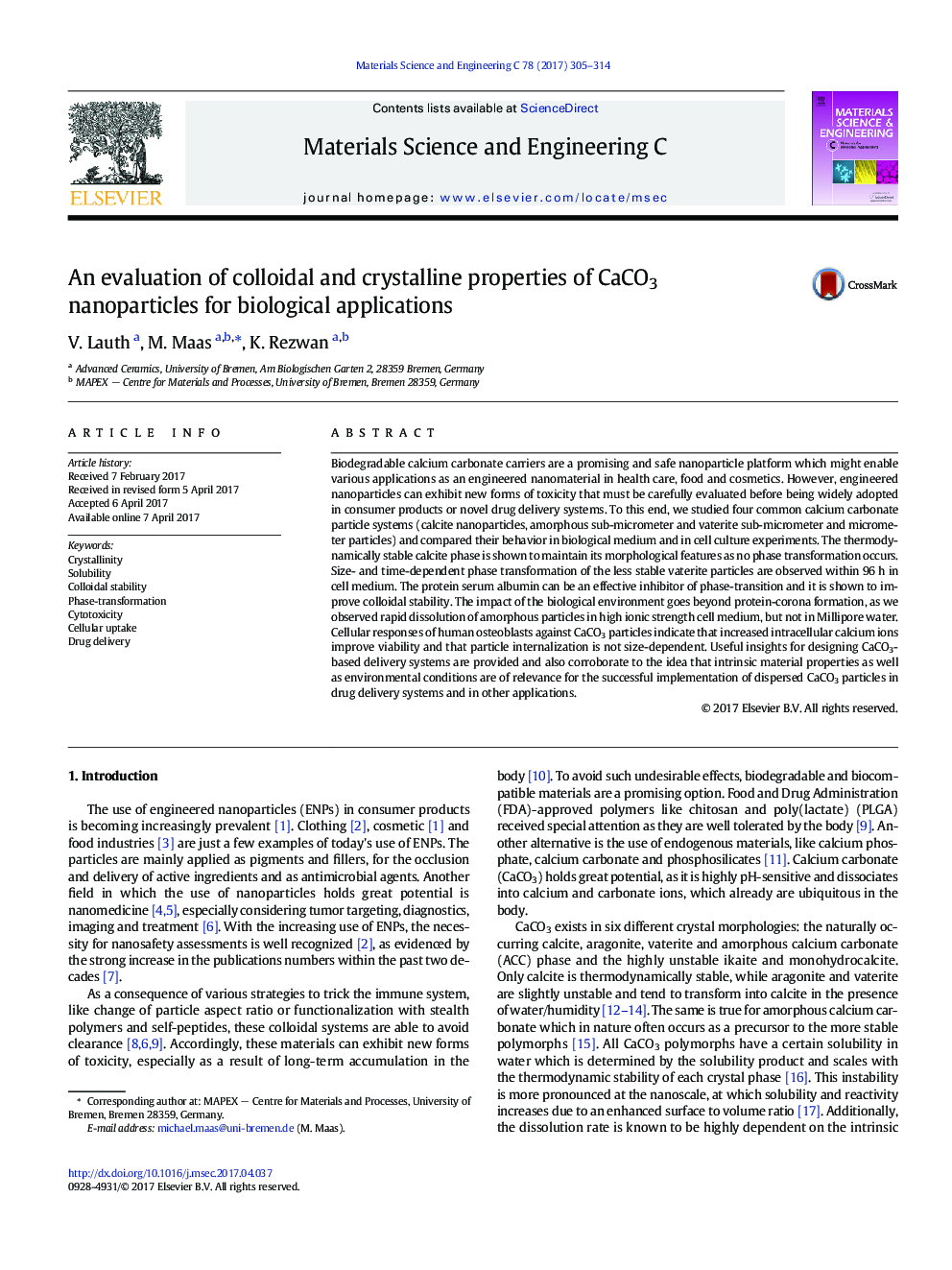| کد مقاله | کد نشریه | سال انتشار | مقاله انگلیسی | نسخه تمام متن |
|---|---|---|---|---|
| 5434418 | 1509143 | 2017 | 10 صفحه PDF | دانلود رایگان |

- Biodegradable calcium carbonate particles with different sizes and polymorphisms were synthesized.
- Colloidal stability, crystallinity, solubility and cell response were studied concurrently.
- Amorphous particles dissolve in the cell medium DMEM but not in Millipore water.
- The colloidal and crystal phase stability in DMEM can be improved by the adsorption of BSA onto the CaCO3 particles.
- All particles are internalized by HOB cells, independent of size and crystallinity.
Biodegradable calcium carbonate carriers are a promising and safe nanoparticle platform which might enable various applications as an engineered nanomaterial in health care, food and cosmetics. However, engineered nanoparticles can exhibit new forms of toxicity that must be carefully evaluated before being widely adopted in consumer products or novel drug delivery systems. To this end, we studied four common calcium carbonate particle systems (calcite nanoparticles, amorphous sub-micrometer and vaterite sub-micrometer and micrometer particles) and compared their behavior in biological medium and in cell culture experiments. The thermodynamically stable calcite phase is shown to maintain its morphological features as no phase transformation occurs. Size- and time-dependent phase transformation of the less stable vaterite particles are observed within 96Â h in cell medium. The protein serum albumin can be an effective inhibitor of phase-transition and it is shown to improve colloidal stability. The impact of the biological environment goes beyond protein-corona formation, as we observed rapid dissolution of amorphous particles in high ionic strength cell medium, but not in Millipore water. Cellular responses of human osteoblasts against CaCO3 particles indicate that increased intracellular calcium ions improve viability and that particle internalization is not size-dependent. Useful insights for designing CaCO3-based delivery systems are provided and also corroborate to the idea that intrinsic material properties as well as environmental conditions are of relevance for the successful implementation of dispersed CaCO3 particles in drug delivery systems and in other applications.
263
Journal: Materials Science and Engineering: C - Volume 78, 1 September 2017, Pages 305-314